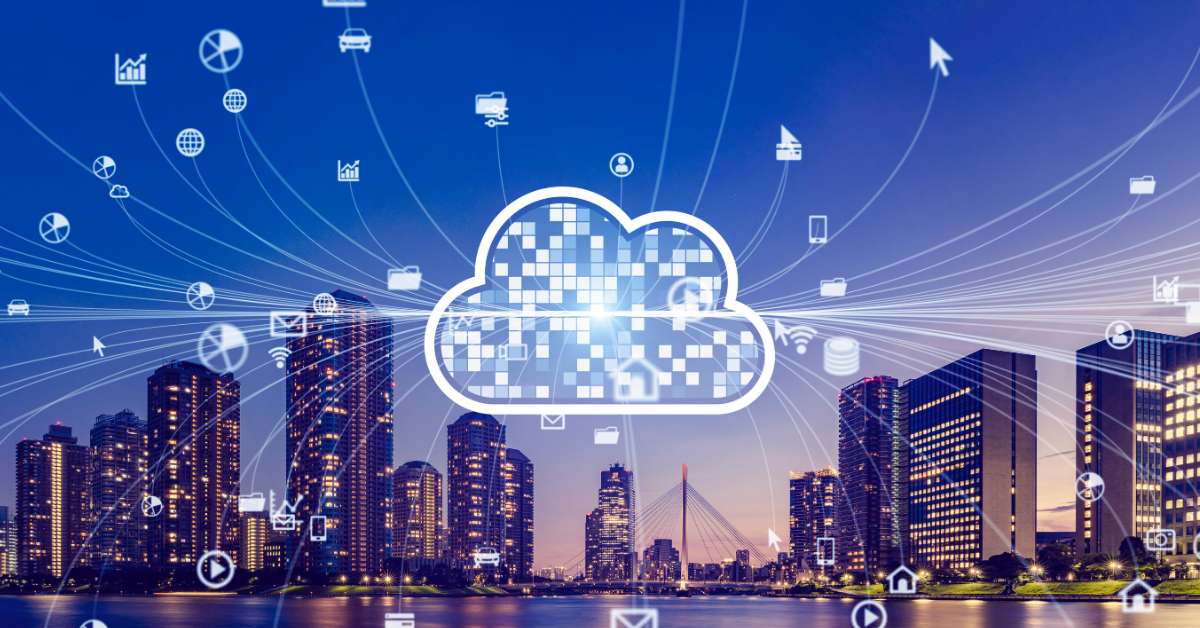Having researched and studied the topic extensively, I’ve written this comprehensive article to address my readers’ inquiries about Software as a Service (SaaS) and its relation to cloud computing.
In this article, I will discuss and expand on the key aspects of SaaS and cloud technology, as well as their benefits and considerations for businesses.
Contents
- 1 Does SaaS Mean Cloud?
- 2 The Relationship Between SaaS and Cloud Computing
- 3 Cloud Deployment Models: Public Cloud, Private Cloud, and Hybrid Cloud
- 4 Benefits of SaaS in Cloud Computing Model
- 5 Key Considerations for SaaS Product (Software as a Service) Adoption
- 6 SaaS and Cloud Software in Today’s Digital Landscape
Does SaaS Mean Cloud?
SaaS (Software as a Service) is a cloud-based method of providing software to users. SaaS allows users to connect to and use cloud-based apps over the internet. While SaaS is a type of cloud computing, not all cloud computing is SaaS. Other types of cloud computing include Infrastructure as a Service (IaaS) and Platform as a Service (PaaS).
The Relationship Between SaaS and Cloud Computing
To further understand the connection between SaaS and cloud technology, it is important to examine the broader context of cloud computing. Cloud computing is a delivery model for various types of IT services that utilize internet-based technologies, replacing the need for onsite infrastructure and computing resources.
There are three primary service models in cloud computing: Infrastructure as a Service (IaaS), Platform as a Service (PaaS), and Software as a Service (SaaS).
- IaaS provides virtualized computing resources over the internet, giving businesses the ability to scale infrastructure up or down as needed. Examples of IaaS providers include Amazon Web Services (AWS) and Microsoft Azure.
- PaaS is a platform that allows developers to build, test, and deploy applications without having to worry about infrastructure management. Famous PaaS providers include Google App Engine and Heroku.
- SaaS, as we have discussed, enables businesses to access software applications over the Internet without the need for in-house software installation or ongoing maintenance.
Cloud Deployment Models: Public Cloud, Private Cloud, and Hybrid Cloud
SaaS services can be deployed using different cloud deployment models:
- Public Cloud: In this model, a cloud provider hosts and manages an infrastructure that is shared across multiple companies. The resources are scalable and easily accessible over the internet.
- Private Cloud: A private cloud is hosted and maintained either on-premises by the organization or by a third-party provider. It is exclusively used by a single organization and offers greater control, customization, and security.
- Hybrid Cloud: Combines features of both public and private clouds, allowing organizations to benefit from the scalability and cost-effectiveness of the public cloud while maintaining control and security through their private cloud.
Benefits of SaaS in Cloud Computing Model
There are several advantages to adopting SaaS applications in the cloud:
- Cost savings: SaaS removes the need for large upfront investments in hardware and software, as well as reducing ongoing costs such as maintenance, updates, and security.
- Scalability: SaaS companies can rapidly scale their software up or down according to customer needs, with no need to invest in additional resources or infrastructure. This flexibility is highly beneficial for businesses experiencing rapid growth or fluctuating demands.
- Accessibility: As SaaS applications are cloud-based, users can access them from any device with an internet connection, promoting remote work and collaboration across teams and time zones.
- Automatic updates: SaaS providers handle all software updates, patches, and bug fixes remotely, ensuring the latest features and security measures are implemented on a regular basis.
- Ease of implementation: SaaS solutions can be deployed faster than traditional on-premises installations, streamlining the transition for businesses and reducing downtime.
Key Considerations for SaaS Product (Software as a Service) Adoption
While SaaS offers numerous benefits, organizations should also keep these considerations in mind before adopting these solutions:
- Data security and privacy: Sharing sensitive information with external providers can be a concern, especially for highly-regulated industries. Businesses should assess the security measures and compliance certifications of their chosen SaaS provider, and establish data backup and recovery plans.
- Customization: SaaS applications are, by nature, more standardized than custom-developed software. Organizations with specialized requirements may find it challenging to adapt SaaS offerings to meet specific business needs.
- Integration: Integrating SaaS applications with existing systems can be complex, and may require considerable time and resources. Businesses should evaluate compatibility and possible integration challenges before implementation.
- Vendor lock-in: Since SaaS applications are typically built on proprietary platforms, businesses could face challenges in migrating data and processes to another provider. It’s crucial to have a clear exit strategy and assess potential vendor lock-in risks.
SaaS and Cloud Software in Today’s Digital Landscape
Gartner, a leading research and advisory firm, forecasts that SaaS will remain the largest market segment in cloud services, growing at a Compound Annual Growth Rate (CAGR) of 20.1% from 2020 to reach $138.3 billion in 2022.
This reflects a growing trend towards cloud-based software solutions and digital transformation across a diverse range of industries.
As businesses continue to embrace digitalization, SaaS applications will also evolve and adapt to meet changing needs, making them a vital part of the cloud computing landscape.


